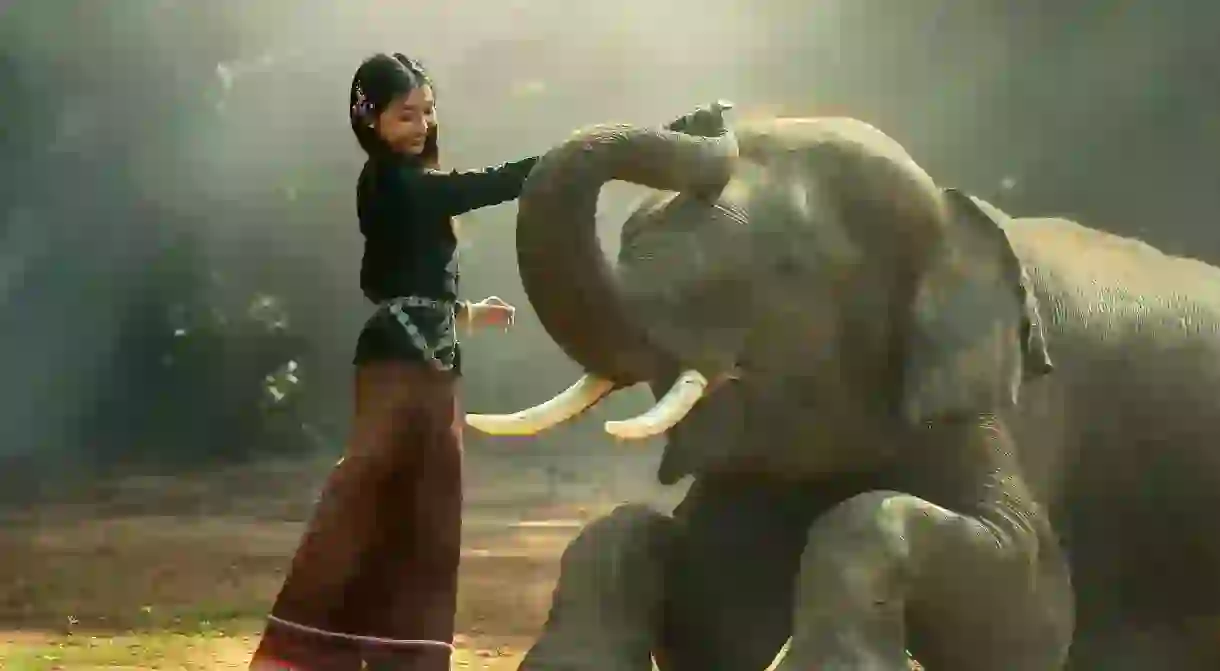How Ancient Thailand Used Elephants as Instruments of War

Long before elephants became the national symbol of Thailand, and before people flocked to play, wash and selfie with them, they had an entirely different purpose—as instruments of war. Here’s a look back at their historic use in warfare, and why their use came to an end.
Tuning the instruments of war
While today the thought alone may seem barbaric, the use of elephants during war was an effective tactic that wasn’t unique to Thailand. Yet before stepping onto a battlefield, elephants had to undergo training to ensure they were up to the task.

The more-aggressive male elephants were trained in loud environments amidst the sound of drums to simulate the environment of war to ensure they wouldn’t be spooked during conflict, and they were cajoled forwards into battle with the help of a spear. Sadly, such training hasn’t been left in the past; whilst the circumstances and finer details might be a little different, this concept of training such a majestic, wild animal still occurs today in Thailand. The practice of Phajaan, or crushing, is still used by mahouts who wish to make elephants rideable for tourists, a practice which is harmful for the animals and should never be done when visiting Thailand.
Historical use in Thailand
The use of elephants in war in the region began as early as the 9th-century. The Khmer Empire—now modern-day Cambodia—ruled Thailand for centuries, with war elephants an effective tool in their arsenal which helped them to conquer and subjugate those around them. The collapse of the Khmer Empire and the rise of Ayutthaya (modern-day Thailand) saw war elephants continue to be used in battle.

Ayutthaya faced many battles with the neighbouring Burma, who had a powerful military at the time, and both sides counted thousands of elephants in their ranks. Covered in armour, seating armed soldiers and capable of charging at speeds of up to 25km/h, elephants were the historical equivalent of a tank, and were feared on the battlefield. However, their most famous use in warfare in Thailand didn’t come during a general skirmish, but a bout of single combat.
Naresuan’s elephant duel
With the Burmese catching Thailand by surprise and advancing on Ayutthaya during the late 16th-century, they had a numerical advantage as the Thais struggled to move their army from one front to another. Ayutthaya’s King Naresuan, upon seeing the crown prince of Burma Mingyi Swa resting on his elephant under the shade of a tree, challenged him to single combat. The prince accepted, and one of the most famous stories in Thai history was started.

The two fought, atop their mighty elephants, and Naresuan was lucky to avoid death at the hands of his younger, fitter opponent, dodging a fierce strike and bearing the brunt of it on his helmet. Naresuan eventually triumphed, cutting Mingyi Swa from shoulder to hip, and the war was over; Ayutthaya had withstood the powerful Burmese military once more, and a legend was born.
End of their use
While elephants were a powerful tool for centuries, the advent of gunpowder saw their effectiveness on the battlefield dwindle, and the use of vehicles and alternate transport options saw their role as transporters become obsolete.
This was typified in an exchange between President Abraham Lincoln and Thailand’s King Rama IV; the Thai King offered elephants to the President in 1862 to help with the civil war effort, but the President graciously turned down the offer, explaining the steam power on water and on land rendered their uses obsolete.














